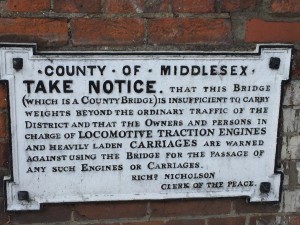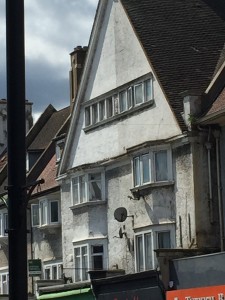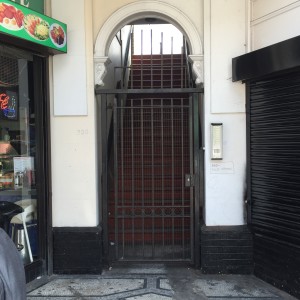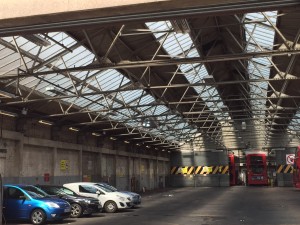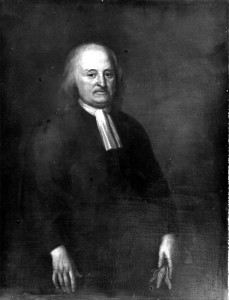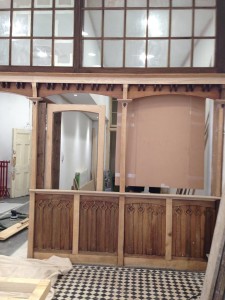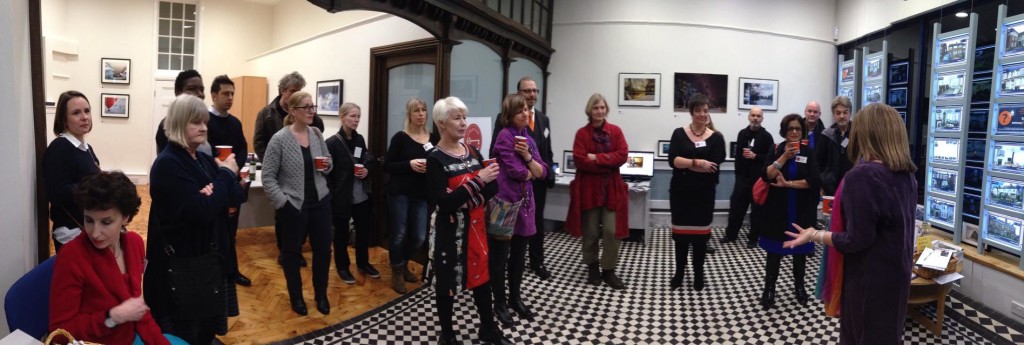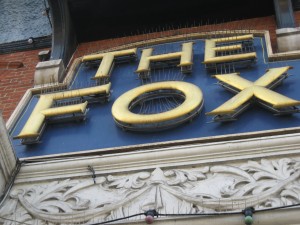 Why do I love The Fox? Well, I admit to having had a drink in there once or twice, several trips to Talkies, and even been to a christening. It is also, so far, Enfield’s only Asset of Community Value.
Why do I love The Fox? Well, I admit to having had a drink in there once or twice, several trips to Talkies, and even been to a christening. It is also, so far, Enfield’s only Asset of Community Value.
But none of those things are really it. This series is about buildings we think should appear on Enfield’s list of local heritage assets. And The Fox to me fits the bill better than almost any of the buildings that were missed from the last edition.
Why? because in many ways it is the most iconic building in Palmers Green. Coming into Palmers Green from the north, it announces Palmer Green in bold and high Edwardian style, preparing one for the exuberant Sykes architecture further down.
The case for the importance of the Fox was made in the application for The Fox to become an Asset of Community Value earlier this year, so, at the risk of boring through repetition, I will simply allow an edited version of those words to make the case for the Fox also appearing on the List of Local Heritage Assets.
The Fox stands in a prominent position on the corner of Green Lanes and its namesake, Fox Lane. Tall and imposing, for those coming to Palmers Green from the north, it acts as a gateway into Palmers Green’s main shopping area.
The Fox has a number of accolades. It is the oldest remaining pub in Palmers Green to have continuously stood on the same site – there has been a Fox on the site for over 300 years. It is also the only purpose built public house still remaining open on the main route between Wood Green and some way north of Winchmore Hill, the others being shop conversions with little architectural or historical merit.
The current building, of 1904, was built as part and parcel of the Edwardian development of Palmers Green. The size and grandeur of the building is a reminder that Palmers Green was once a place of enough significance to require a hotel and associated dining for travellers. Before the coming of the car, the Fox was the terminus of the horse drawn bus service into London, run by the Davey family of publicans who had stables at the back. Once the trams came, it was a major landmark on the journey from London. All taxi drivers still know the Fox.
As a former bus and train terminus, and a hotel, the Fox has always been at the centre of Palmers Green’s social and community life. June Brown, Dot Cotton from Eastenders, ran her theatre company from it, bands, including big names like Geno Washington and the Ram Jam Band, have played in it, famous comedians perform in it to this day, and the famous have drunk in it – locals like Rod Stewart and Ted Ray and visitors including the famous names who trod the boards at the Intimate Theatre.
The Fox, then, holds a position of huge cultural significance in an area, which tends to think of itself as having a short past… If Palmers Green were ever to lose its landmark pub, and this landmark building, it would lose part of itself.
I still do not know the architect, having tried all the usual places, but perhaps there will be someone reading this who has a cunning ruse to find out, or can even tell me.
Nomination for the local list: The Fox
- This article has been prepared as part of the process to nominate buildings and landmarks to Enfield’s updated local list. For more information see http://www.palmersgreenn13.com/2015/09/11/every-street-in-palmers-green/. And if you have any suggestions for buildings which aren’t listed but should be included in the local list, please get in touch.
